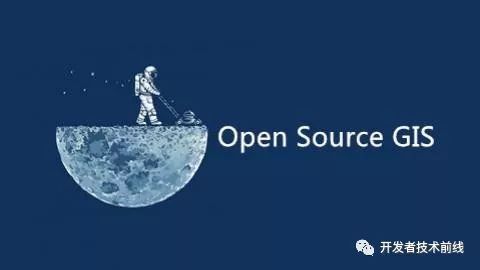可以将文章内容翻译成中文,广告屏蔽插件可能会导致该功能失效(如失效,请关闭广告屏蔽插件后再试):
问题:
I want to modify the Windows PATH variable using setx. The following works at least 50% of the time on Windows 8:
setx PATH %PATH%;C:\Python27\;C:\Python27\Scripts\
If it gives the error "the default argument can only be used 2 times", then the following works some of the time:
setx PATH "%PATH%;C:\Python27\;C:\Python27\Scripts\"
The difference is that we wrapped the second argument in quotes. I believe the quotes are necessary when %PATH% expands to include spaces.
However, I have encountered some weird problems on Windows 7. On one particular Windows 7 machine, I had this problem:
echo %PATH%
It prints:
C:\Foo\;C:\Bar\;[...lots of stuff...]C:\Baz\
Then I do this:
setx PATH "%PATH%;C:\Quux\"
Then it says "Error: Truncated at 1,024 characters." Now let's check what PATH contains:
echo %PATH%
It prints:
C:\Foo\;C:\Foo\;C:\Bar\;C:\Bar\;[...lots of stuff, now duplicated...]C:\B
...and it is cut off at 1,024 characters. It ran over because of the duplicates. Also interesting: The value of PATH changes despite the fact that setx raised an error and did not say "Success".
I was able to repeat this strange behavior several times (luckily I had saved the original contents of PATH).
At the moment, the only surefire way I know to append to the PATH is the following:
echo the PATH.
Copy the contents of PATH into a text file and manually add ;C:\Python27\;C:\Python27\Scripts\ to the end of the PATH.
Copy the whole thing out of the text file.
setx PATH "<paste the string here>"
That process works every single time on both Windows 7 and Windows 8.
I should really be able to do this in one command. What am I doing wrong?
Thank you.
回答1:
Run cmd as administrator, then:
setx /M PATH "%PATH%;<your-new-path>"
The /M option sets the variable at SYSTEM scope. The default behaviour is to set it for the USER.
TL;DR
The truncation issue happens because when you echo %PATH% it will show the concatenation of SYSTEM and USER values. So when you add it in your second argument to setx, it will be fitting SYSTEM and USER values inside the USER var. When you echo again, things will be doubled.
Additionally, the /M option requires administrator privilege, so you need to open your terminal with "run as administrator", otherwise setx will complain with "access to registry path is denied".
Last thing to note: You won't see the new value when you echo %PATH% just after setting it this way, you need to close cmd and open again.
If you want to check the actual values stored in registry check this question.
回答2:
This works perfectly:
for /f "usebackq tokens=2,*" %A in (`reg query HKCU\Environment /v PATH`) do set my_user_path=%B
setx PATH "C:\Python27;C:\Python27\Scripts;%my_user_path%"
The 1st command gets the USER environment variable 'PATH', into 'my_user_path' variable
The 2nd line prepends the 'C:\Python27;C:\Python27\Scripts;' to the USER environment variable 'PATH'
回答3:
If you're not beholden to setx, you can use an alternate command line tool like pathed. There's a more comprehensive list of alternative PATH editors at https://superuser.com/questions/297947/is-there-a-convenient-way-to-edit-path-in-windows-7/655712#655712
You can also edit the registry value directly, which is what setx does. More in this answer.
It's weird that your %PATH% is getting truncated at 1024 characters. I thought setx didn't have that problem. Though you should probably clean up the invalid path entries.
回答4:
I was facing the same problems and found a easy solution now.
Using pathman.
pathman /as %M2%
Adds for example %M2% to the system path. Nothing more and nothing less. No more problems getting a mixture of user PATH and system PATH. No more hardly trying to get the correct values from registry...
Tried at Windows 10
回答5:
Without admin rights the only way that worked for me is a bat file that contains the following code:
for /F "tokens=2* delims= " %%f IN ('reg query HKCU\Environment /v PATH ^| findstr /i path') do set OLD_SYSTEM_PATH=%%g
setx PATH "%USERPROFILE%\wev-tools;%OLD_SYSTEM_PATH%"
The code is the combination of the answers https://stackoverflow.com/a/45566845/4717152 and https://stackoverflow.com/a/10292113/4717152
回答6:
I was having such trouble managing my computer labs when the %PATH% environment variable approached 1024 characters that I wrote a Powershell script to fix it.
You can download the code here: https://gallery.technet.microsoft.com/scriptcenter/Edit-and-shorten-PATH-37ef3189
You can also use it as a simple way to safely add, remove and parse PATH entries. Enjoy.
回答7:
Steps: 1. Open a command prompt with administrator's rights.
Steps: 2. Run the command:
setx /M PATH "path\to;%PATH%"
[Note: Be sure to alter the command so that path\to reflects the folder path from your root.]
Example : setx /M PATH "C:\Program Files;%PATH%"
回答8:
If someone want to run it in PowerShell it works like below,
Run Powershell as Administrator
Then
setx /M PATH "$Env:PATH;<path to add>"
To verify, open another Powershell and view PATH as below,
$Env:PATH




